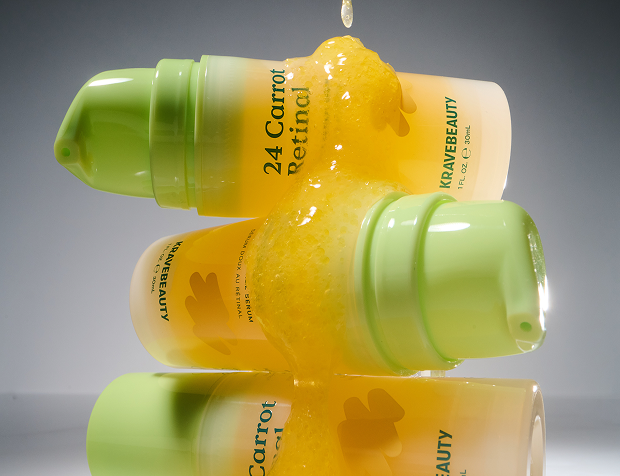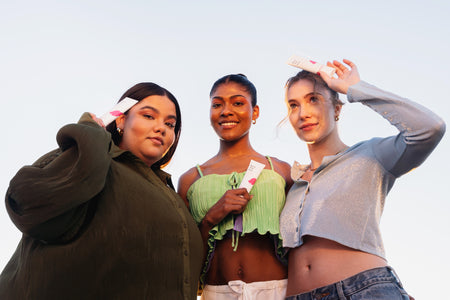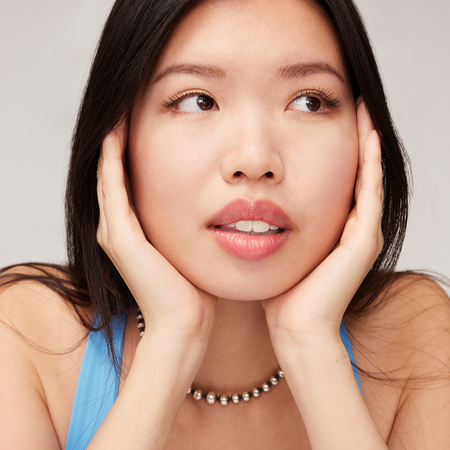Melanoma & Its Effects on Melanated Skin

Melanoma affects people of all races, but for those with melanated skin, it can sometimes go undetected and become a deadly threat. In this blog post, we'll be discussing what melanoma is, its effects on melanated skin, and what you can do to detect and prevent.
What is melanoma and how does it occur?
According to the Skin Cancer Foundation, melanoma is a serious form of skin cancer that starts in cells known as melanocytes. Melanocytes can be found in the upper layer of skin and are known for producing a pigment known as melanin. Melanin gives skin its color and can be separated into two different types: eumelanin and pheomelanin.
When your skin is constantly exposed to UV radiation from the sun or tanning, it can cause skin damage which triggers the melanocytes to produce more melanin. However, only eumelanin pigment tries to protect the skin, causing it to tan or darken. Melanoma then occurs when the DNA damage from excessive exposure to UV radiation triggers changes in the melanocytes. These changes are basically gene mutations that can affect cell growth and division. It can even spread to other parts of the body if left untreated.
What are the 4 main types of melanoma?
Superficial spreading melanoma - The most common type of melanoma.
- It can show up in an existing mole or as a new lesion.
- If it starts on a mole, it can grow on the surface of the skin before deeply penetrating into the skin over time.
- It can be found on the torso, legs, or upper back.
- It may look like a flat or slightly raised and discolored uneven patch with skewed borders.
- It can look tan, brown, red/pink, blue or white.
- It can also look pink or similar to the skin as a lesion.
Lentigo maligna - A type of melanoma that develops in older folks.
- Similar to the type listed above, it grows close to the skin surface first.
- The tumor usually appears on sun-damaged skin on the face, ears, arms, or upper torso
- It looks like a flat or slightly raised, blotchy patch with uneven borders.
- It is usually blue-black but can also be tan, brown, or dark brown in color.
Acral lentiginous melanoma - The most common type of melanoma that affects POC.
- It can appear in odd, unseen body parts like under the nails, soles of the feet, or the palms of your hands.
- It can appear as a black or brown patch on the skin.
Nodular melanoma - The most aggressive type of melanoma that accounts for 10-15% of all cases.
- The tumor can grow deeper and more rapidly into the skin compared to the other types.
- It is mostly found on the torso, legs, arms, and even on the scalp.
- It is usually deemed invasive at the first diagnosis.
- This type can be seen as a bump on the skin.
- It’s usually blue-black in color but can also appear as a pink/red bump.
What is the issue with melanoma and its effects on melanated skin?
Naturally, darker skin tones have more eumelanin while fairer skin tones have more pheomelanin. Even though eumelanin can protect skin from sun damage, pheomelanin does not have the same ability. This means that people with darker skin are less susceptible to developing skin cancer compared to fairer skin tones as they lack eumelanin.
While it may be true that people of color are less likely to be affected by skin cancer compared to those with fairer skin tones, unprotected UV exposure can still pose a deadly threat. The main issue for those with melanated skin is that skin cancer like melanoma is usually diagnosed at a late stage. Not only is it difficult to treat skin cancer at this stage, but it also means that melanoma in melanated skin can be more dangerous and spread quickly when unnoticed.
How do you detect it?
As stated by the Skin Cancer Foundation, “look for anything new, changing or unusual on both sun-exposed and sun-protected areas of the body.” Melanoma can appear on the legs for women-identifying individuals and on the torso area for men- identifying individuals. However, melanomas can also develop in areas that do not get direct sunlight. This means folks have to be very vigilant when it comes to mysterious or unknown patches that develop on their skin. If you see anything fishy, immediately contact your dermatologist!
How can you reduce the risk of getting skin cancer?
Now that we’ve covered the what and the why, here’s a list of things you can do to reduce your risk of getting skin cancer:
- Seek the shade especially between 10 am to 4 pm.
- Avoid tanning beds.
- Wear a broad-spectrum sunscreen with an SPF rating of at least 15 or higher. (Which also helps treat hyperpigmentation for melanated skin! Learn more from @pamylasworld!)
- For extended time outdoors, use a water-resistant, broad spectrum sunscreen with an SPF of 30 or higher.
- Apply two fingers worth of sunscreen 15 minutes before sun exposure and reapply every 2 hours.
- Cover up with UV protected clothing and accessories.
- Examine your skin top to bottom every month.
- See a dermatologist at least once a year for a professional skin exam.







